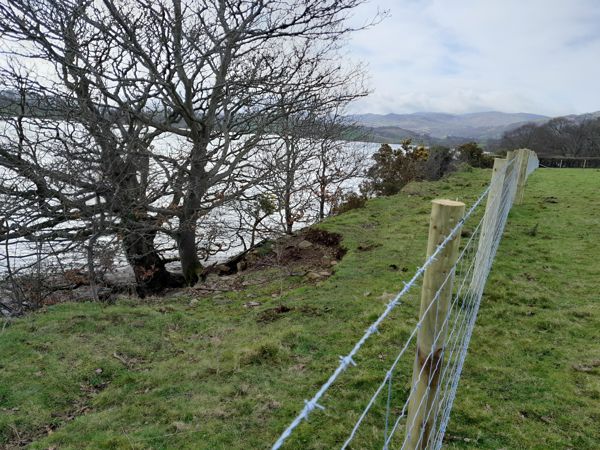Fencing will provide benefits in river catchment

Work in the Upper Conwy catchment will help prevent riverbank erosion, boost biodiversity, and improve livestock management and water quality.
National Trust Cymru and Natural Resources Wales (NRW) created 560 metres of fencing on tenanted farmland at the Trust’s Cymryd property, adjacent to Aber Afon Conwy Site of Special Scientific Interest.
Putting up fencing four metres inland will allow space for tree planting to strengthen the riverbank, which is being eroded by the Afon Conwy, while creating a woodland habitat corridor for birds and mammals including rare lesser horseshoe bats.
As well as reducing sediment in the water from bank-side erosion it will prevent livestock from grazing near the water, reducing nutrients entering the river and improving water quality.
Salt marsh restoration will also allow more water to be stored on the field during increasingly higher tides.
Work was carried out as part of Prosiect Uwch Conwy, which aims to provide benefits to the communities and wildlife of the Upper Conwy catchment by creating a cleaner and healthier environment, bringing people and nature closer together.
Sarah Aubrey, a member of NRW’s Conwy Environment team, said:
“We are pleased to have worked in partnership with the National Trust and the tenants on this project.
“It has multiple benefits, improving water quality which is favourable to fish populations and providing a boost for lesser horseshoe bats, a species of conservation importance. The habitat corridor will link Benarth Wood Site of Special Scientific Interest with bat populations at Gorse Hill.
“This work adds to the Uwch Conwy project which has seen a wide range of work carried out to bring important natural sites back into a favourable condition and to restore a diverse, connected and resilient upland landscape.”
Dewi Davies, of National Trust Cymru, said:
“I’d like to thank our tenant farmers for working with us on this section of National Trust land. Their support has enabled us to take meaningful steps in addressing biodiversity loss and climate change.
“By safeguarding and rejuvenating a natural habitat, we not only contribute to the environment but also assist the farm businesses to improve boundaries for livestock management.”
